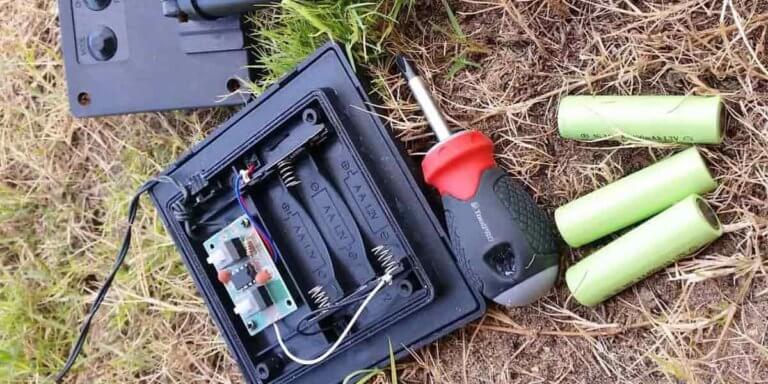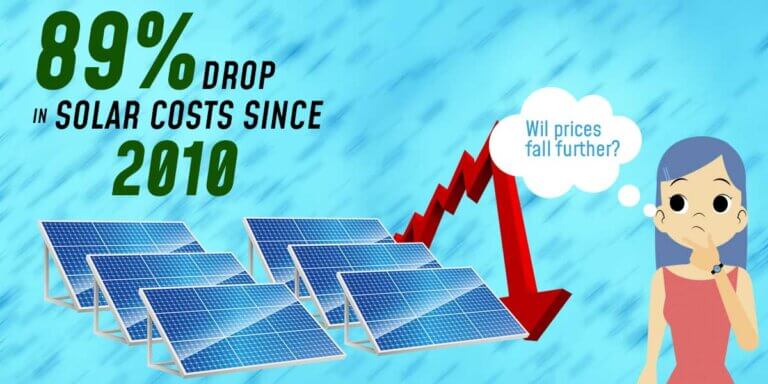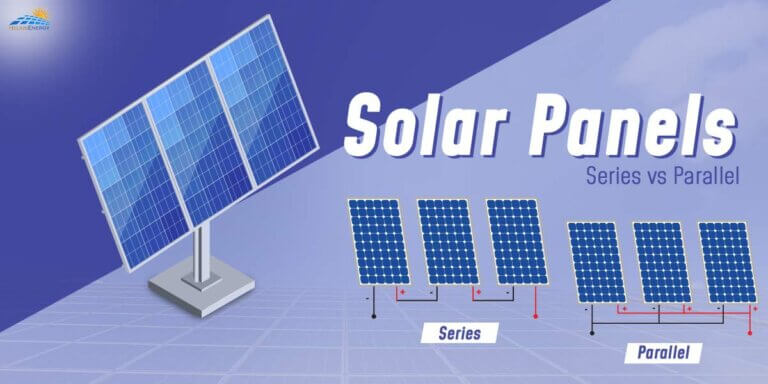What Is The Fill Factor Of A Solar Cell? | Why Is It Important?

When we take a leap towards environmentally conscious choices, knowledge about sustainable practices must follow suit. It has become a growing trend to adopt solar panels in place of standard electricity, and needless to say, that is, without a doubt, the right direction.
But is it enough to shell out enough money for solar panel installations and then forget about it? We believe some rudimentary knowledge about the working of solar panels enhances our chances of making the right, informed decision.
One of the essential components of solar power is the fill factor of solar cells. What are they? In this article, we shall discuss what solar cell fill factor means. Read on to know more.
- 1. What is The Fill Factor Of A Solar Cell? | What is The Fill Factor Formula?
- 2. What Is The Difference Between Fill Factor And Efficiency of Solar Cells?
- 3. What Are The Factors Affecting The Efficiency Of PV Cells?
- 4. How to Improve The Efficiency of Solar Cells
- 5. Why Can’t Solar Cells be 100% Efficient?
- 6. Conclusion
- 7. Frequently Asked Questions
What is The Fill Factor Of A Solar Cell? | What is The Fill Factor Formula?
One of the essential metrics when it comes to solar cells is their efficiency. Calculating the solar panel efficiency helps determine the amount of incident solar energy converted into usable electrical energy. For instance, a 1m2 solar panel having 15% efficiency will convert a radiant energy worth 1000 W/m2 into about 150 W of usable electrical energy. This efficiency of solar cells is defined as the fill factor (FF).
As for the fill factor formula, here it goes:

In layperson’s terms, FF is the ratio of the area (defined by Vmax and Jmax) to the area denoted by (Voc, Jsc) on the IV curve. As for the Efficiency in terms of the Fill Factor, this is how that will look like:

You can simplify the expression for the efficiency of solar cells by substituting FF in the above-mentioned equation:
OR
Now, let us take a look at some of the practical values of efficiency and fill factor of solar cells:
This will be the efficiency if some of the practical issues pertaining to solar cells are ignored. Therefore, the typical efficiency of a mono-crystalline solar cell would be lower (15% to 20%).
Note:
- Vmax and Imax are the Voltage and Current measured at the Maximum Power Point (MPP) on the IV curve. Note that Power is the product of Voltage and Current.
- Following basic circuit theory, the power deployed from or to a device is optimized where the slope (graphically)/derivative dI/dV of the IV curve is equal and opposite to the I/V ratio, where dP/dV=0. This is termed the Maximum Power Point (MPP) and corresponds to the ‘knee’ of the curve.
- A solar charge controller has to be used to charge the batteries from your solar panel operating at the Maximum Power Point.
- As the Voltage approaches the Open Circuit, a more rapid drop in Current indicates the chances of the Fill Factor being closer to the ideal value of 100%.
What Is The Difference Between Fill Factor And Efficiency of Solar Cells?
There are 3 primary differences between solar cell efficiency and fill factor. Here is a chart:
| Efficiency | Fill Factor |
|---|---|
| It is the ratio of the maximum power a solar PV panel is capable of generating under standard testing conditions to its input power | It is the ratio of the highest power to the theoretical power. |
| A solar PV panel’s efficiency can be maximized through an increased Fill Factor (FF), Voc, and Isc. | The maximum power (theoretical) you can achieve depends on various factors, one being the silicon type employed in building the solar PV modules. Deviation from the anticipated value in fill factor might be evidence of the module turning out faulty |
What Are The Factors Affecting The Efficiency Of PV Cells?
The unmitigated reliance and dependence on fossil fuels such as oil, coal, natural gas, and more to generate electricity has led us to an uncertain future. But it is possible to fulfill the ever-increasing need for power with alternative energy sources having durability and resourcefulness as attributes.
So, a thorough inspection of all the factors contributing to the PV cell’s lack of efficiency is more relevant now than ever before. Here are the factors impacting the efficiency of PV cells:
Factor 1:
Among 2 solar PV panels, the one with a lower fill factor magnitude will accomplish lesser efficiency than the other.
Factor 2:
Temperature and Solar Specter impact the Efficiency of a PV panel as well. A solar PV panel usually generates electricity by employing sun rays but it decreases the efficiency with increasing irradiance.
If a solar PV panel’s temperature goes beyond the optimum limit of the operating amount of temperature, the overheated solar PV panel will lead to a drop in the Voc and Isc, along with a decrease in efficiency.
Factor 3:
The light intensity impacts the fill factor of solar cells significantly, so efficiency is also affected by the variation in illumination intensity. The FF goes up for irradiation <500 W/m2 (low irradiation), and it comes down for irradiation >500 W/m2 (high irradiation).
Similarly, the efficiency goes up logarithmically for irradiation <400 watts/m2 (low irradiation), but the efficiency doesn’t decrease or increase for irradiation >400 watts/m2 (high irradiation).
Factor 4:
Dust accumulation density of a solar PV panel’s surface worsens solar cells’ quality and fill factor. A solar PV module’s output will be decreased by 20% following a dust storm and 50% over a period of 6 months. Other researchers say a solar PV module’s output in a tropical climate might even be decreased by 35% in a month.
How to Improve The Efficiency of Solar Cells
The photoconversion method of solar PV panels requires improvement to see significant progress and to showcase extraordinary growth as an alternative energy source. There are various factors affecting solar panel efficiency. Depending on these factors some ways to improve the efficiency of solar cells is given below:
- Examine the geographical location before installing a solar PV system to mitigate the impact of environmental factors such as humidity or dust accumulation.
- Expand the optimizing considerations as per to the versatile climates to see a more significant performance.
- Factors like mounting angles or dominant wind directions must be considered rather than the generalized method of installing a solar PV system.
- With the solar cell efficiency decreasing with increased cell temperature, due to the solar cells’ thermal degradation, keep the surface of a solar panel at its optimum temperature.
- Reduce the overheating problem of a solar PV panel by some air- or water-cooling methods.
- Utilize the characteristics of anti-reflecting materials to enhance a solar PV panel’s performance.
Why Can’t Solar Cells be 100% Efficient?
Solar cells will not be able to reach 100% efficiency since the solar spectrum puts out photons involving a wide range of energies. Light energy can be recovered as electrical energy only for the particular spectral ranges of the semiconductor materials. The maximum efficiency, in theory, is 33.7.
The energy conversion process will not be able to complete at 100% owing to the optical losses or intrinsic resistivity. The light energy being reflected and scattered or converted to hit energy prevents the total use of the vast energy source.
Conclusion
A thorough understanding of the solar system is crucial, as this lets us select appropriate modules while maximizing power generation from our PV panels. A viable way to enhance efficiency is to concentrate more on fitting the PV cell in a suitable position (taking the ambient climate conditions into account), so start from there!






